Learning to Make Pasta in the Kitchens of Rome
The amazing cooking class below was complimentary in exchange for this review. As always, opinions, photographs, and experiences are my own.
For me, spending the winter in Italy was about one thing: food.
Italy has a lot to recommend it—ancient buildings, charming hill towns, vast stretches of coastline—but the main thing that drives me back to the country over and over again is the simple, local, beautifully made, endlessly flavorful food.
So this winter, I spent my December in Sicily seeking out authentic granita–the original Italian shaved ice (which, as with anything in Italy, tastes 1,000 times better than any of the US knockoffs I’ve had)–and delicate, lightly sweet cannoli.
Then we moved to Rome for January and February and I took on two savory quests:
The first: to find the best pizza in the world–a quest that would require a whole lotta pizza eating in both Rome and, the birthplace of pizza, Naples.
The second: to learn how to make real, made-from-scratch pasta.
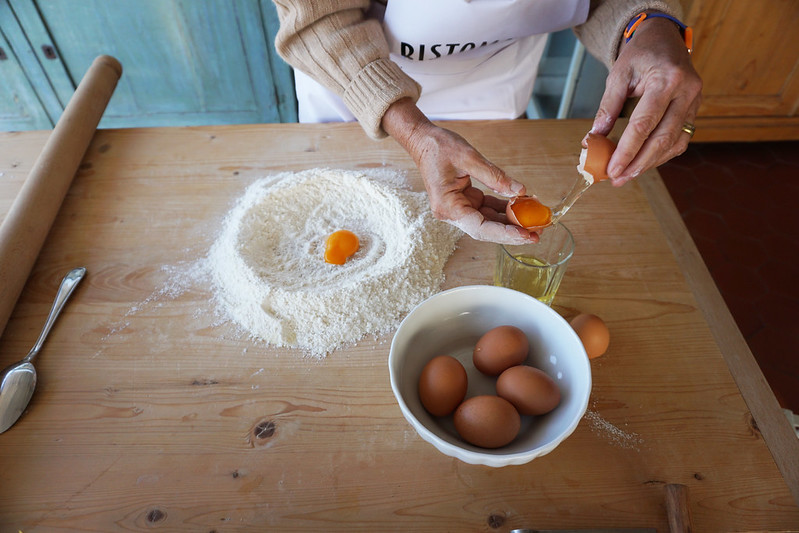
I’m a pretty good home cook and have attempted homemade pasta before…with uncharacteristically disastrous results. And so now that I was spending a whole winter in the heart of Italy, I was going to learn how to do it right.
I decided to take two different pasta-making lessons from two different companies. The first: a private lesson through Ristomama with a semi-retired food writer and brilliant home cook who grew up surrounded by good Italian fare since her family owns a restaurant in Northern Italy.
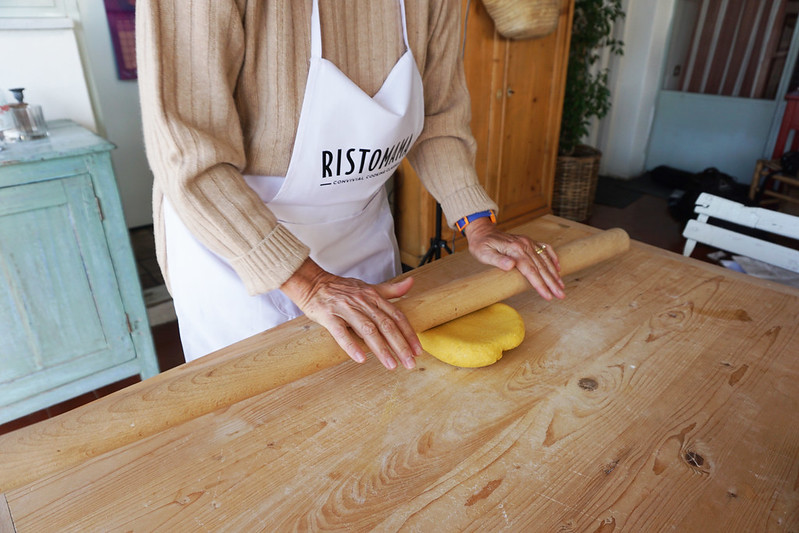
The lesson was held in her bright, sunny kitchen and living room at the top of an apartment building in the foodie-loved neighborhood of Testaccio.
Through the windows, we could see her terrace, spacious and covered in plants and herbs she grows. In the living room itself, a large wooden board was attached to the tabletop and it was here that we mostly worked, mixing, kneading, rolling pasta.
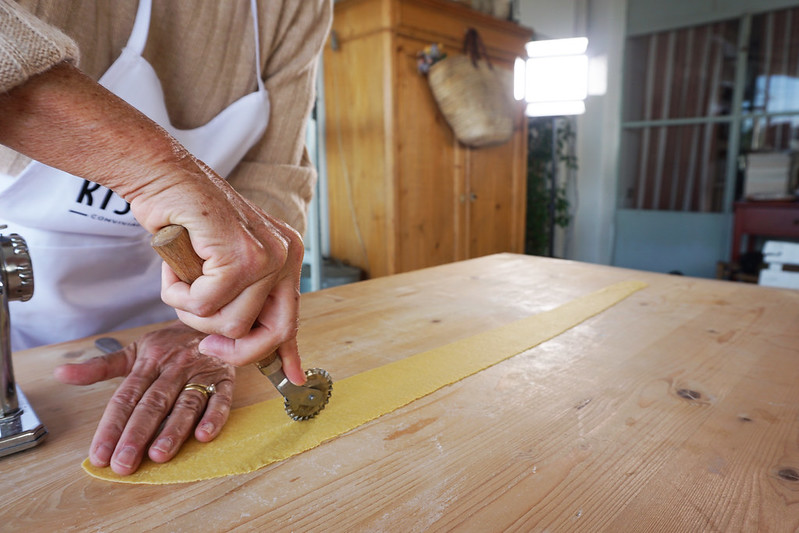
The basics of pasta-making are these: flour and eggs. And the magic is in getting the details right: making sure to sift the flour, measuring by weight instead of in cups, using a few whole eggs and a few additional egg yolks, cleaning the surface thoroughly between steps.
I watched Raffaela measure, sift, and mix until a beautifully yellow ball of dough formed. Then we turned to kneading, an action much harder and clumsier feeling than it looks. Raffaela’s kneading was like a dance, rhythmic, quick, mine lumbering and clumsy, with muscles protesting after only a minute or two.
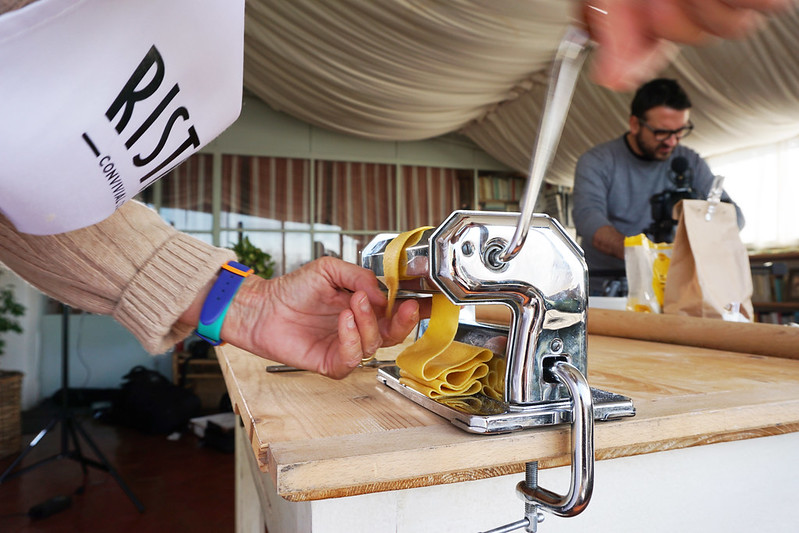
And then there was a pasta-flattening machine passed down from Raffaela’s grandmama, creating long ribbons of thin yellow dough, which we cut and stuffed and folded into three shapes while tomatoes and artichokes, broth and onions simmered and boiled away on the stove in the background.
There were stories about childhoods spent watching mamas and grandmas make pasta, of dads surreptitiously stealing the uncooked tortellini for a pre-dinner snack (and then we each stole one of our own to try). There were conversations about the importance of humidity when simmering green onions, about soaking artichokes in water with lemon to keep them from oxidizing, about covering pans sometimes with wet wax paper to keep the humidity in.
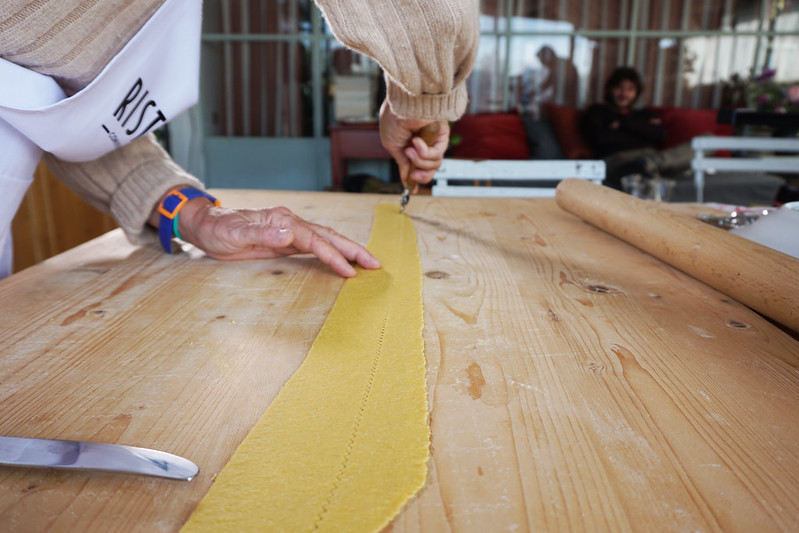
“Food is a way to show love,” the owner of Ristomama (who had joined us along with a photographer to photograph the lesson) said. In so many countries this is true, but particularly in Italy, where local traditions and fresh ingredients and slow-made food survives and thrives, even as the world seems to turn more and more toward convenience and processed goods.
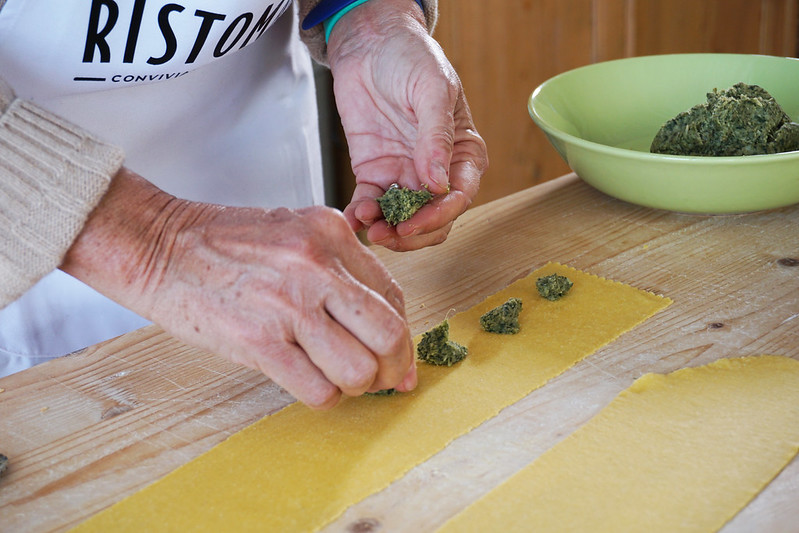
And once the rolling and stuffing, cutting and pinching, shaping and sautéing were finished, there were traditional Northern Italian tortellini in broth, breathtaking ravioli stuffed with an unusual and wonderful mint-infused filling, and long, satisfying strands of tagliatelle coated with an artichoke tomato sauce.
We all–our chef Raffaela, photographer Sam, owner Giacomo, and myself–sat around a well set table for four, toasting with our glasses full of a rich Chianti wine, talking about food, laughing about life, and eating as much pasta as we could hold.
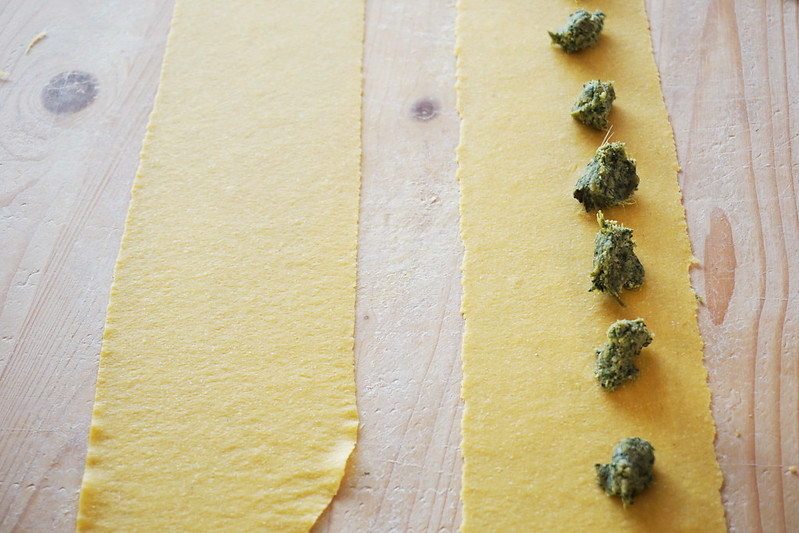
In the end, I wandered away with a full belly, a light heart, a new confidence in my ability to try to make my own pasta from scratch again, and a notebook full of foodie recommendations for the rest of my time in Rome (which is the additional perk of any experience led by a local: always ask for recommendations!).
In all, a beautiful day and a quest I’m very glad I undertook.
Here’s the rest of the journey in photos:
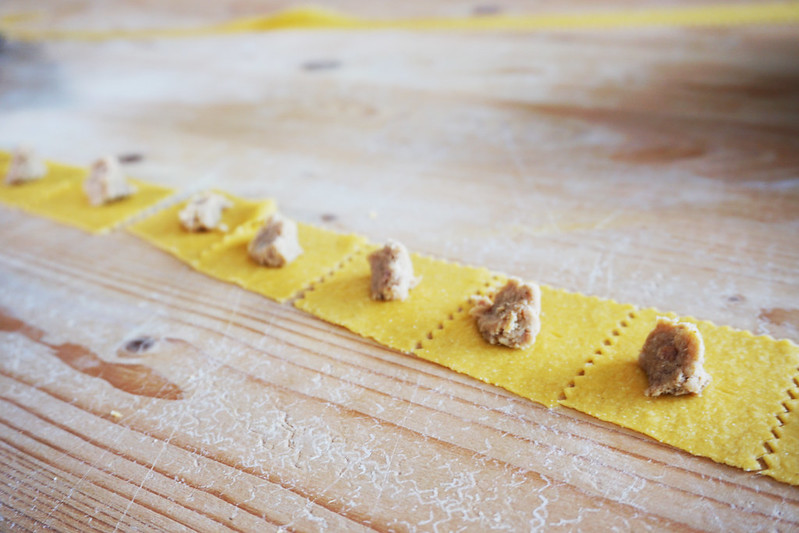
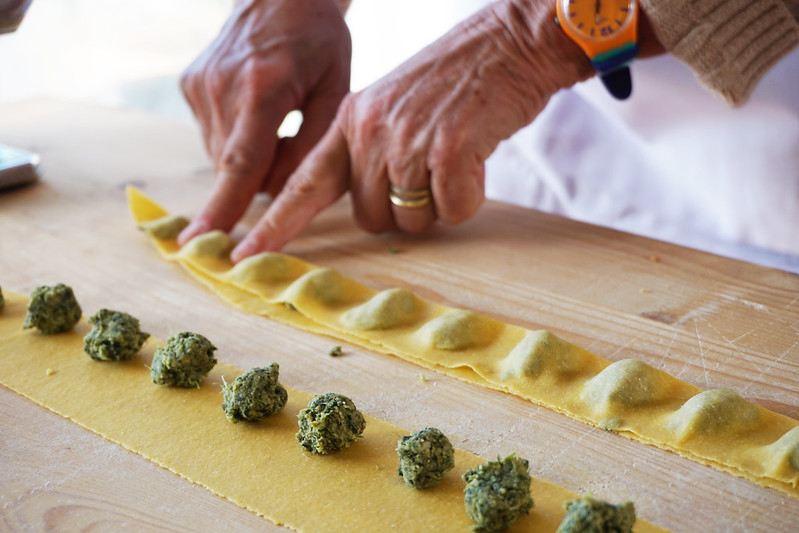
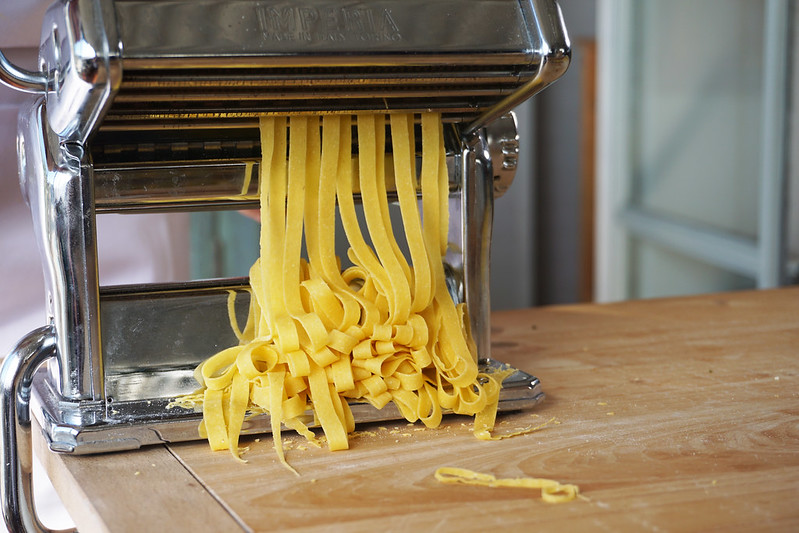
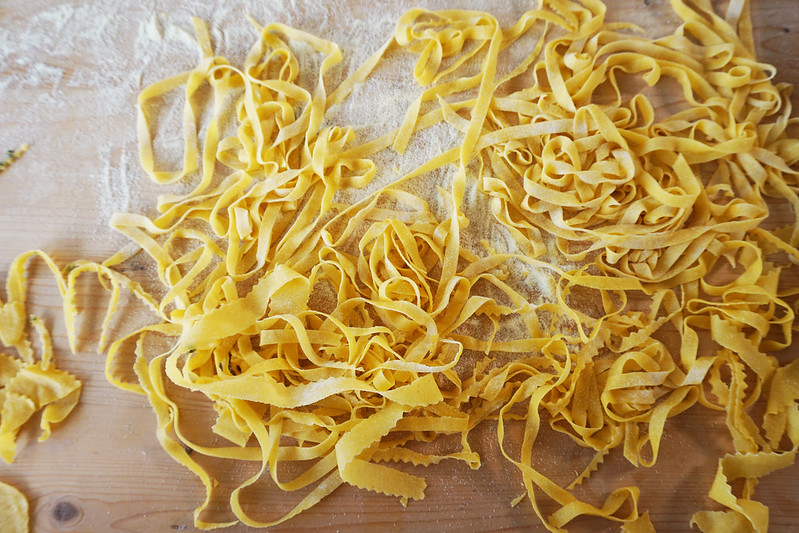
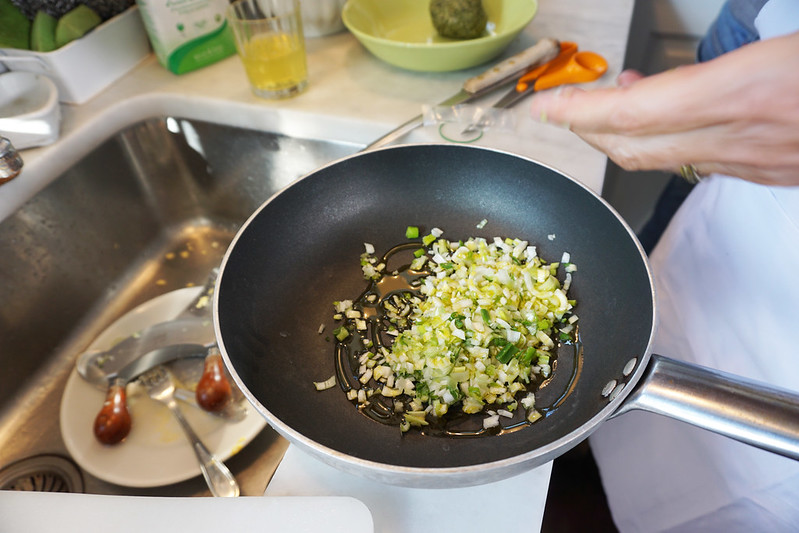
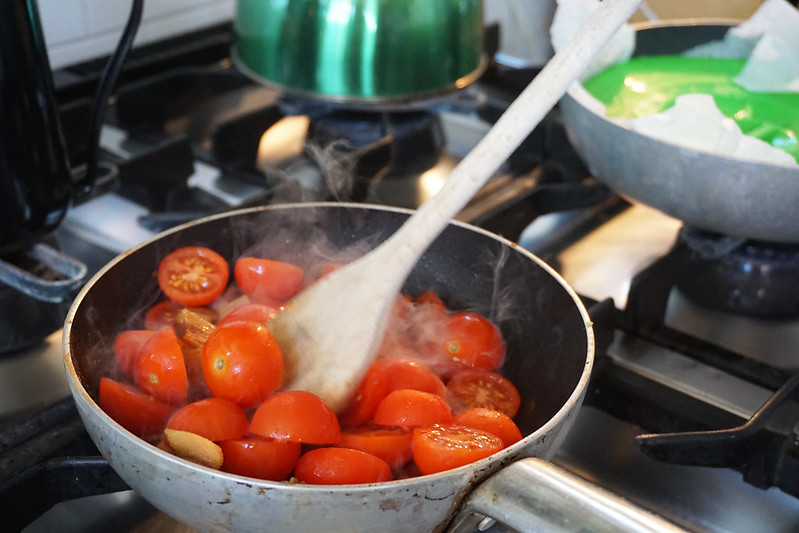
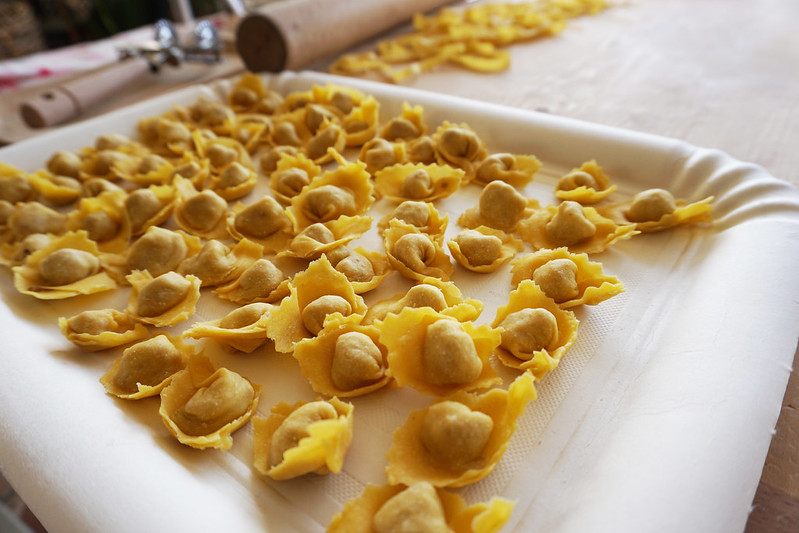
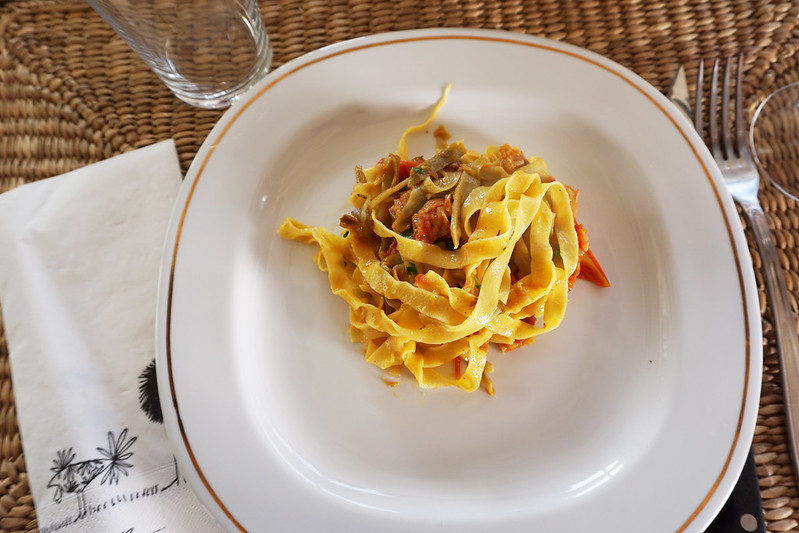

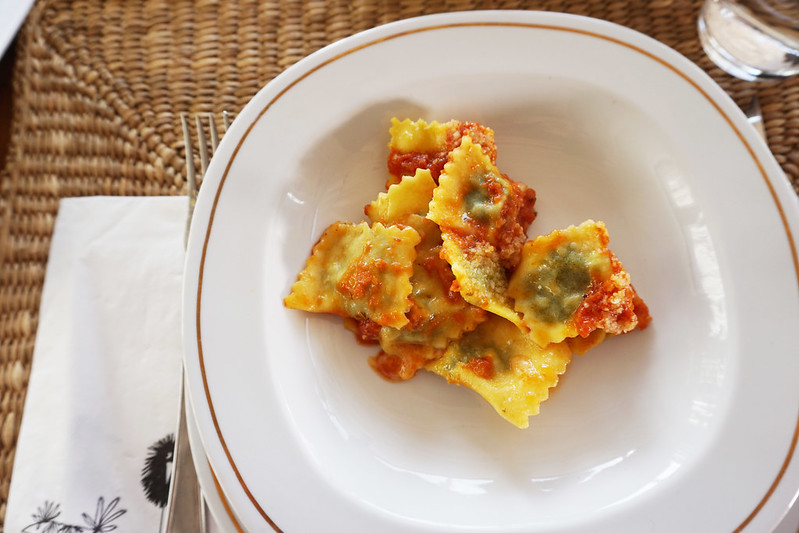
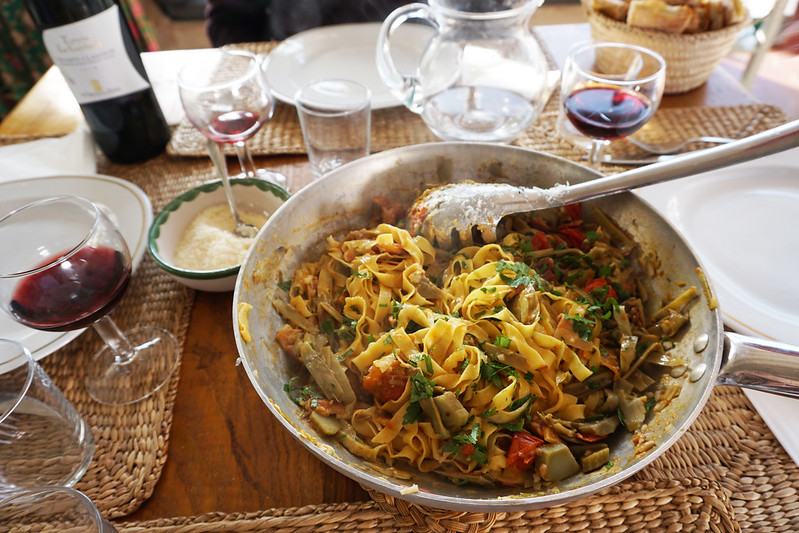
If taking a pasta-making class in Rome (or elsewhere in Italy) sounds magical to you, you can book with Ristomama here. Tell them I sent you.
 |
Going to Italy? Get tips from 100 top chefs, wine experts, and locals all over Italy! |

Annie Anderson
Pasta is my fav food so far. Yet I never think of making it on my own. These photos bring a very satisfying feeling and make me wanna try. Thank you!